Digital Ordering – Curse or Cure for Struggling Restaurant Concepts?

Panera Bread bets on expensive eCommerce platform to lift sales and improve customer service
As American consumers continue to embrace technology into all aspects of their lives, digital ordering may seem like an obvious choice for any retail restaurant company looking to grow its customer base, but this transition could result in a number unanticipated challenges for the industry. Fast casual restaurants, which have seen their popularity increase dramatically in the last decade, face a particularly difficult trade off as they balance increased access with the promise of high levels of customer service.
Panera Bread, a popular fast-casual restaurant in the United States that has long prided itself on providing high levels of customer service, is facing this challenge head on. Known within the company as “Panera warmth,” employees are taught to provide a welcoming and friendly experience, offering Panera as an “everyday oasis” away from life’s many stresses [1].
Delivering on this customer promise has rewarded both guests and shareholders. As of May 2016, Panera served ~8.3 million customers a week, had ~97,000 employees, operated in 46 states and Canada and had nearly $5 billion in annual system sales [1]. For shareholders specifically, the company’s stock (PNRA) has outperformed the industry over the past 20 years [1].
After weathering the financial crisis well, many Panera cafes faced the issue of long order lines and long production wait times during peak traffic periods; mainly during lunch [2]. In 2010, CEO Ron Shaich began to view digital ordering as a solution and the company began investing in and testing a variety of platforms. Ultimately, the company envisioned customers placing orders across a range of digital platforms including, web, mobile and in café kiosks. This initiative became known as “Panera 2.0.”
Panera 2.0 began testing in the Boston area in 2011 and quickly expanded to an additional 15 cafes in Charlotte, North Carolina [3]. By mid-2013 the company was testing its fully integrated platform, allowing customers to order in café via Kiosks, online via the web or through a mobile app. The idea of providing so many access points to customers was twofold:
- Allow greater customer access to help reduce order times during peak periods
- Provide customers with a superior customer experience by allowing increased customization and access to previous orders and loyalty rewards.
After rolling out web and mobile ordering to all company owned café and installing kiosks in over 450 company owned cafes, digital utilization rates reached 22% in Q3 2016 with the company claiming to fill 125,000 – 130,000 eCommerce orders daily. By 2017 Panera expects to have $1 billion in annual digital sales, up from current digital sales of $650 million, representing a dramatic transformation from five years prior when it began testing the first version of Panera 2.0 [4] [1].
Challenges:
Although the success of Panera’s digital transition is impressive, it has come at a cost. Developing such a complex web and mobile ordering system and designing and installing a network of kiosks cost tens of millions of dollars, required additional training for employees and created unforeseen friction within the cafes.
One of the biggest concerns for the company has been ensuring customers feel the same level of “Panera warmth” they had prior to the rollout of Panera 2.0. Most digital orders are to-go orders, which means more and more customers have limited contact with friendly cashiers or time to take advantage of the cafes relaxed and cozy atmosphere. Customers feel more like simple transactions than valued customers and any accuracy issues that could have been easily fixed by a caring associate are now only angrily voiced via social media and word-of-mouth. Equally as important, as customer orders have increased during peak hours, production times have also increased, causing frustration for customers who were promised that the new digital ordering system would save them time and stress.
Employees are also increasingly concerned about losing their jobs to technology, although for the time being, Panera claims that its digital order platform will actually require it to hire more workers [5]. With the push for a $15 minimum wage gaining momentum, the company may have to change its position as it looks for labor savings to spare consumers from dramatic price increases.
For Panera to succeed as it continues its transition into the digital world, it will have to radically re-think its fundamental café design and labor deployment. Many of its locations are restricted by physical kitchen space, limiting production capacity during peak times and increasing order errors [6]. Will Panera have to pull back on its commitment to digital orders? Or will it fully embrace the digital world and once again look to technology to solve its most pressing problems?
[769 Words]
[2] http://www.wsj.com/articles/SB10001424052702303615304579153450909661702
[3] http://fortune.com/2014/03/27/with-digital-ordering-panera-makes-a-big-bet-on-tech/
[5] http://www.fastcasual.com/articles/paneras-self-service-kiosks-provide-key-to-growth/
[6] Company insider


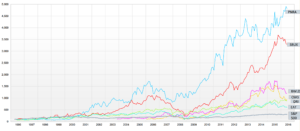

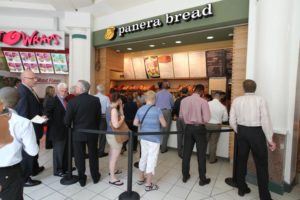
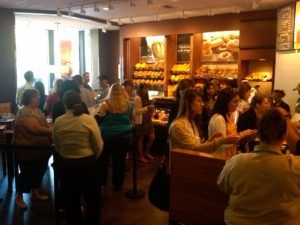
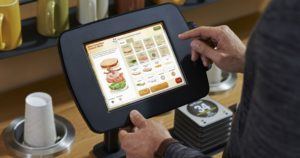
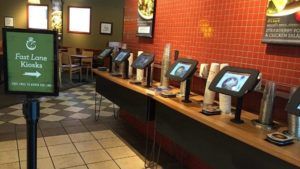

Great article WRE! As a frequent customer at Panera, I love their kiosks. I really like being able to input what I want myself to make sure there are no mistakes (i.e. if I do not want cucumber on my salad) and getting my food faster because there are no lines to use the kiosk. I understand that Panera is all about providing the “warmth” to their customers, but I think in the 21st century where we are all busy and used to getting our way, most customers prioritize these two positives above providing the Panera love and therefore overall Panera is net positive in their business model for having installed them.
I applaud Panera for promising their employees that this digitization will not affect their jobs, however this is just not doable in the long run if they would like to be competitive in the marketplace. For instance, as we discussed with taxi drivers being phased out do to technological improvements (i.e. Uber) – if we pay them for now despite the digitization, when will it end? Do we continue carrying the dead weight forever? Panera can’t do this if they would like to keep their prices manageable to their customers and I think it is unreasonable for them to even try. These workers should be alerted sooner rather than later that their jobs are being replaced by technology so they can start looking for a new job.
Very interesting article, WRE! I agree in Lindsey that some jobs will be cut due to technology. On the other hand, if this allows Panera to increase its output rate, they will need more people in the kitchen and management. Adding technology in the restaurants may, thus, shift the bottleneck to other areas that will need to increase capacity.
Regarding your point on how technology affects customer promise, I wonder if Panera has any sort of satisfaction surveys to watch for consumer satisfaction. It would be interesting to see satisfaction for people ordering through the tools vs. regular ordering. It is possible that people who really want the Warm Panera experience will continue to order on cashiers and, thus, keep their high satisfaction. I do like the idea of adding another option that lowers speed of service and increases total tickets to help dilute the high fixed costs of a restaurant!
As I read this blog post, I found myself weighing the pros and cons of Panera’s eCommerce platform. While there are certainly arguments for both sides, I ultimately think there might be too much risk going with this new strategy. In addition to being expensive to install, I think the digital transition poses risks to the perception of Panera. Panera is a restaurant known for the friendly staff and customer service. By taking away this human element, Panera starts to resemble a fast-food restaurant and less of a fast-casual restaurant. Panera’s point of differentiation is that it feels more upscale than a McDonalds or a Burger King. By placing orders at machines, the experience feels more transactional and less personal.
While this method of ordering would potentially help reduce wait times, I think there are other superior alternatives that Panera could look to (e.g. hiring more staff, cross-training staff, or even simplifying order options/preparation). When customers enter a Panera, I don’t think they will mind waiting a few minutes, as this is part of the experience; they don’t expect to get their food within 30 seconds as they might at a fast food chain. Ultimately, I think kiosks pose a direct threat to the “Panera warmth” that has kept customers loyal to the brand.
As WRE points out, the central challenge of Panera going after a digital strategy is that it is inherently against the core of its business model. However, I disagree with Erica’s post above that Panera should shy away from digitizing its platform. From my perspective, the industry is trending towards less customer service, with customers valuing convenience and price more. If Panera bucks the trend, they risk becoming less relevant to consumers and eventually putting themselves out of business. To stay competitive, I believe that Panera should fully roll-out a eCommerce platform, but seek to differentiate its model in other ways (because as competitors also digitize then they lose their competitive advantage). One way to do so is with its menu, offering more organic and natural choices which would be in line with current food trends. They could also explore using real estate differently, creating a cafe/co-working space that would increase loyalty to Panera.
In addition to the costs you’ve mentioned this digitization already having incurred, I worry a little about how much ongoing investment keeping up with online orders will entail if you’re looking to keep up with customer expectations. For example, the kiosks installed at the 450 stores were, I’m sure, very high tech when installed, but technology in this space develops so rapidly, I wonder how quickly they will become outdated and therefore need to be replaced. I think there are 21st century tradeoffs between personal customer service and online convenience that customers are ready to make, but the last thing you’d want is to walk into a Panera store, not have a warm personal interaction with the staff, and find the available kiosk ordering system to feel old, slow, and clunky. Keeping up with a digital experience that feels innovative and as good as the current “Panera warmth” experience is likely to continue to be expensive in the long term. Hopefully Panera is considering these future and ongoing costs as they roll out these ecommerce initiatives in the balance of their stores.
Although I understand some of the customer service concerns voiced by earlier commentators, I definitely feel Panera should move full press with the mobile ordering platform. Although the “friendly factor” at Panera has been a great branding strategy in the past, I think the average customer values speed, order accuracy (which I would expect to increase when cutting out the middle man at the register), and food quality above all else. Store management could easily establish a presence at the pick-up station to ensure some level of personal interaction with the customer; this way employees can also react quickly if any mistakes were made during food preparation. Additionally, if the volume of customers spending time in the dining areas significantly decreases, Panera might want to consider shifting towards smaller storefronts, thereby generating cost savings on real estate that can help fund ongoing innovation efforts.
I wonder if Panera will be able to differentiate its digital system from other competitors by making it a more personal experience, for example keeping track of consumers’ previous orders and integrating in suggestions for future combinations using deep machine learning data mining. As glempres mentions, continued investment is also very important and necessary in order for them to keep up with the competition, and without this increased level of innovation, it will be challenging for the company to defend its market share 5, 10 years down the road.
Cool post Bill! It’s interesting to see Panera adapt beyond its ‘bread’ and butter strategy to its new Panera 2.0 digital strategy. I have used the iPad order services before and they do not have the same customer experience as ordering from the cashier. I would be interested to see how this plays out!
Thank you for bringing this digital experience at Panera to life for us, WRE. First, as I have worked in workforce development for the past three years, I thoroughly understand the challenges that one faces in workforce development training and the amount of money it takes to make this happen (with some workers having to go through extensive training for lack of computer literacy, especially in low-income areas). Companies usually do not estimate properly the amount of time/money required to make the shift to digitization, and the broader impacts these changes have on the community and “first” job opportunities. Beyond the cost, I remember in New Orleans the conversations around Panera 2.0. People (and myself) had many questions: how would this new digital system actually work? Who would I ask for basic services? Did I have a choice to talk with a cashier if needed? Overall, I do not think Panera 2.0 hurts from these digital adjustments; however, I do think that as a leader in this space, Panera must do the heavy lifting of educating community.